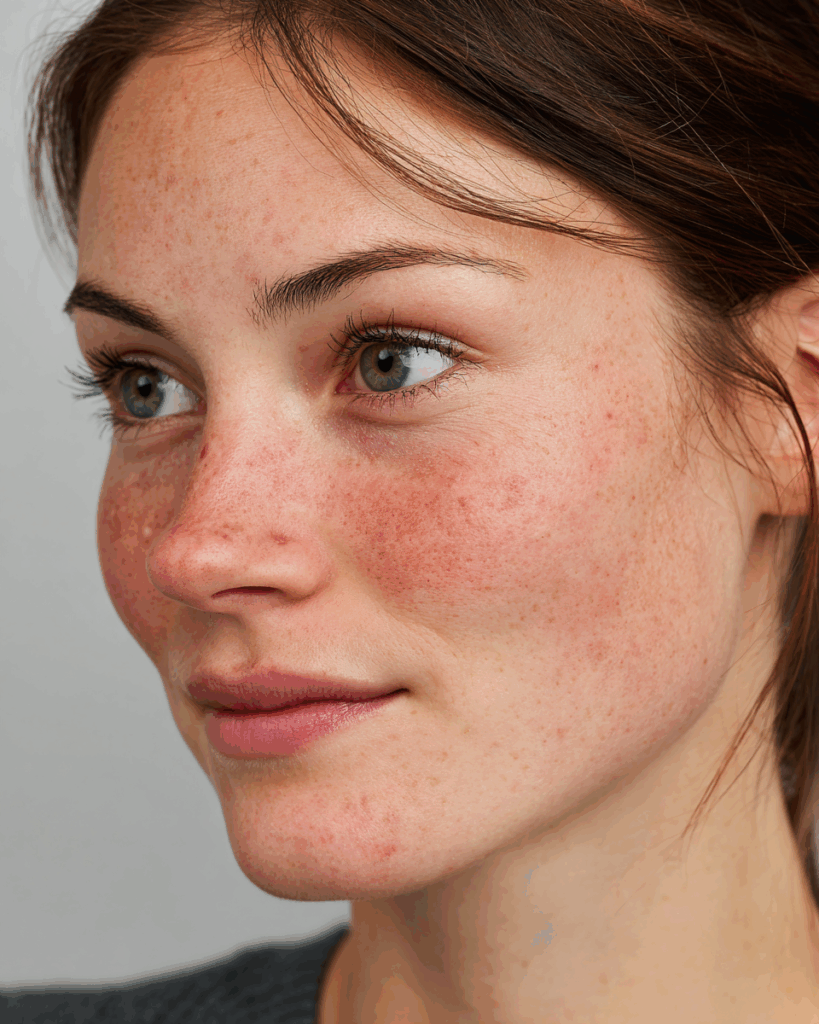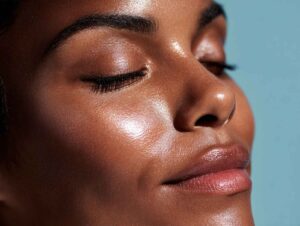Estheticians, Professional Skincare, Skincare
Post Inflammatory Erythema What It Is What Triggers It and How to Treat It
Skin often has a way of holding on to memories. Sometimes those memories are freckles from childhood summers, other times they are scars that never fully fade. And then there is something more elusive: the lingering pink or red patches that remain long after a breakout has healed. This condition has a clinical name – post-inflammatory erythema, or PIE – and though it’s harmless, it can be surprisingly frustrating.
For many people, PIE can feel like an extension of acne itself. Even after blemishes have stopped forming, these reddish marks can make skin look irritated, blotchy, or uneven. Unlike scars, they are not permanent, but they don’t disappear overnight either. Understanding what PIE is, why it happens, and how to manage it can make the process far less discouraging.
Defining Post-Inflammatory Erythema
Post-inflammatory erythema refers to the persistent redness that remains after inflammation in the skin has resolved. The term itself breaks down into three useful parts: “post” means after, “inflammatory” points to the underlying irritation, and “erythema” refers to redness caused by dilated blood vessels near the skin’s surface.
PIE is distinct from post-inflammatory hyperpigmentation (PIH), which leaves brown, tan, or even gray spots after inflammation. The difference lies in what’s left behind. In PIH, excess melanin has been deposited in the skin. In PIE, the culprit is vascular. Blood vessels that dilated during inflammation don’t constrict right away. They stay widened and visible, giving the skin a pink or red tint. This is why PIE often looks flush-like or resembles a stain under the surface.
Because PIE is a vascular issue, it’s especially common in lighter skin tones, where contrast against the skin is more visible. But it can affect all tones, particularly after severe or cystic acne.
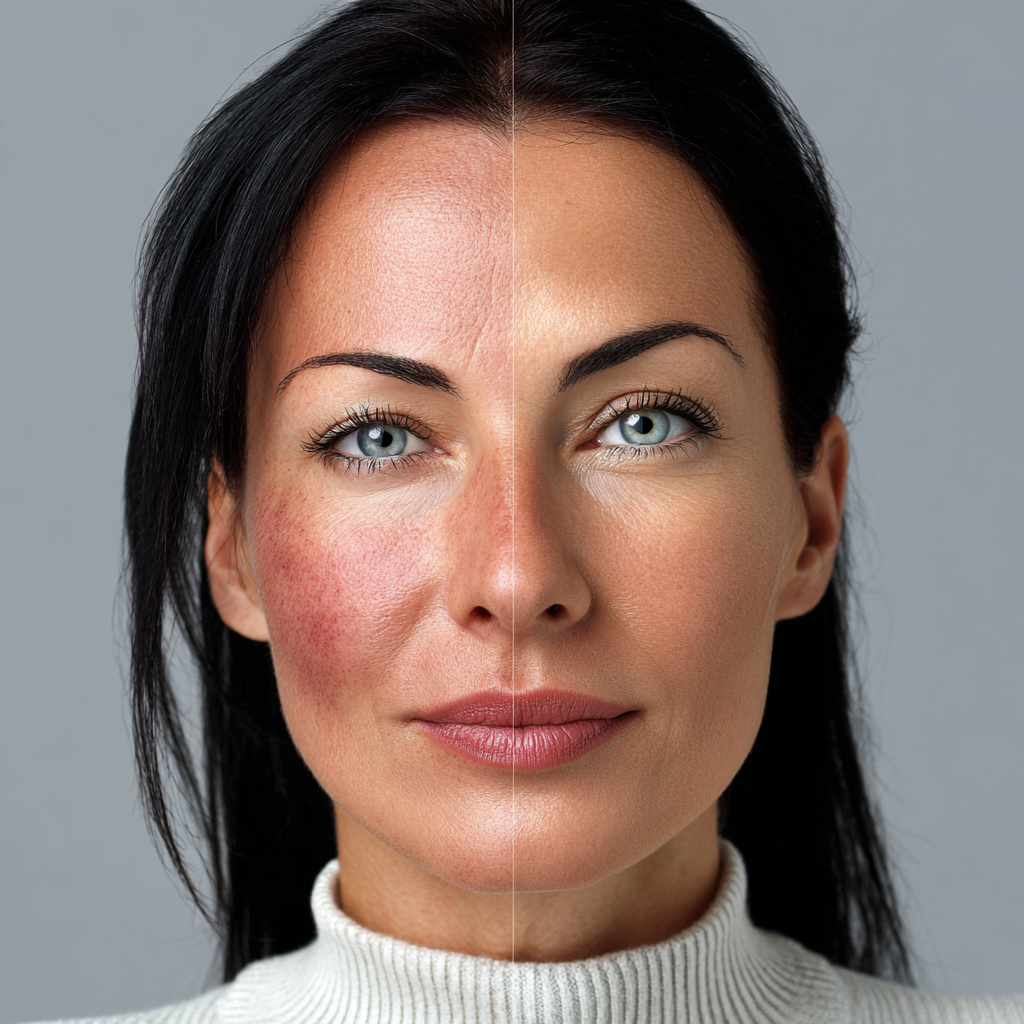
Why It Happens
To understand PIE, it helps to think about the body’s normal response to injury. Whenever skin is injured or inflamed, whether by acne, eczema, or even a cut, the body widens blood vessels in the area. This dilation allows more immune cells, nutrients, and oxygen to reach the site of injury. It’s part of the body’s natural healing system.
But sometimes those blood vessels don’t return to their usual size. The inflammation resolves, the acne heals, but the vascular changes remain. That’s when PIE becomes noticeable. The pink or red color is essentially leftover evidence of a healing process that worked a little too well.
Triggers can vary, but acne is by far the most common. Any inflammatory condition can cause it, though. Scratching, picking, or squeezing pimples increases the risk, since this creates extra trauma to the skin. Treatments that are too harsh, like overly strong acids or rough scrubs, may also trigger PIE because they increase inflammation rather than reduce it.
What PIE Looks Like
One of the challenges of PIE is how easily it can be confused with other post-acne marks. It tends to show up as flat pink, red, or even purplish areas on the skin. Unlike active acne, it doesn’t have a bump, pus, or tenderness. Unlike hyperpigmentation, it doesn’t look brown or shadowed. And unlike scars, it doesn’t leave a permanent change in the skin’s surface.
The marks often appear where acne was most inflamed: cheeks, jawline, or forehead. They may be more visible in sunlight or after exercise, when blood flow increases to the skin. In some cases, PIE fades within weeks. In others, it can persist for months, sometimes even longer.
The Emotional Weight of PIE
The psychological burden of PIE is worth mentioning. According to research from the American Academy of Dermatology, nearly 85 percent of people between the ages of 12 and 24 experience acne at some point, and for many, the aftermath – PIE included – can feel almost as stressful as the breakouts themselves (https://www.aad.org/media/stats-numbers). The red marks are a visual reminder of what the skin has been through, and they can undermine confidence even during periods of clear skin.
This is why treating PIE isn’t just about improving appearance. It’s also about improving quality of life, restoring confidence, and breaking the cycle of self-consciousness that so often accompanies acne.
Treating Post-Inflammatory Erythema
There’s no single cure for PIE, but there are multiple ways to speed its resolution and make it less noticeable. Treatment options range from at-home skincare to professional procedures. The right choice depends on how severe the erythema is, how long it’s been present, and how aggressive someone wants to be about addressing it.
Patience and Time
The first and simplest treatment is time. PIE does fade naturally. Because the issue is vascular, the body eventually encourages those dilated blood vessels to return to normal. For some people, this can happen in a matter of weeks. For others, especially with deeper or more widespread marks, it may take months. Consistency with a gentle routine can support this process.
Sun Protection
One of the most effective, yet often overlooked, strategies is daily sunscreen. Ultraviolet exposure aggravates inflammation and keeps blood vessels dilated longer. Sunlight also darkens hyperpigmentation, which can make PIE look worse by contrast. A broad-spectrum SPF of at least 30 helps shield the skin and give it the best chance at calming down.
Gentle Skincare
Supporting the skin barrier is essential. Harsh cleansers, drying toners, or over-exfoliation can keep skin in a perpetual state of irritation. Switching to a gentle, non-foaming cleanser, soothing moisturizers, and barrier-strengthening ingredients like ceramides or niacinamide creates an environment where healing is easier. Niacinamide, in particular, is useful because it has anti-inflammatory properties and can reduce redness over time.
Topical Treatments
Several topical ingredients have shown promise for PIE. Azelaic acid is one. It not only reduces acne formation but also has anti-inflammatory benefits, which can help calm lingering redness. Vitamin C serums can strengthen capillaries and improve overall skin tone, though they need to be used consistently and at the right concentration. Green tea extract, licorice root, and centella asiatica are other plant-based options with mild redness-reducing effects.
Retinoids, often thought of for acne or anti-aging, may also help PIE indirectly. By speeding up cell turnover, they encourage the skin to remodel itself faster. However, they must be used cautiously, since they can initially increase irritation if over-applied.
Professional Treatments
For stubborn or widespread PIE, professional intervention may be the fastest path. Vascular-targeting lasers, such as pulsed dye lasers (PDL) or Nd:YAG lasers, are commonly used. These treatments specifically target hemoglobin in blood vessels, collapsing the dilated capillaries that cause redness. Intense pulsed light (IPL) is another option, though it’s less precise than laser.
Microneedling, often thought of for scarring, may also help PIE by stimulating repair and creating controlled injury that encourages vascular normalization. Chemical peels, particularly mild ones, can accelerate turnover and minimize discoloration, though they should be used with caution to avoid worsening irritation.
These procedures can be costly and require multiple sessions, but for many, the reduction in redness is worth the investment. Dermatologists can help decide which option fits best, depending on skin type and severity.
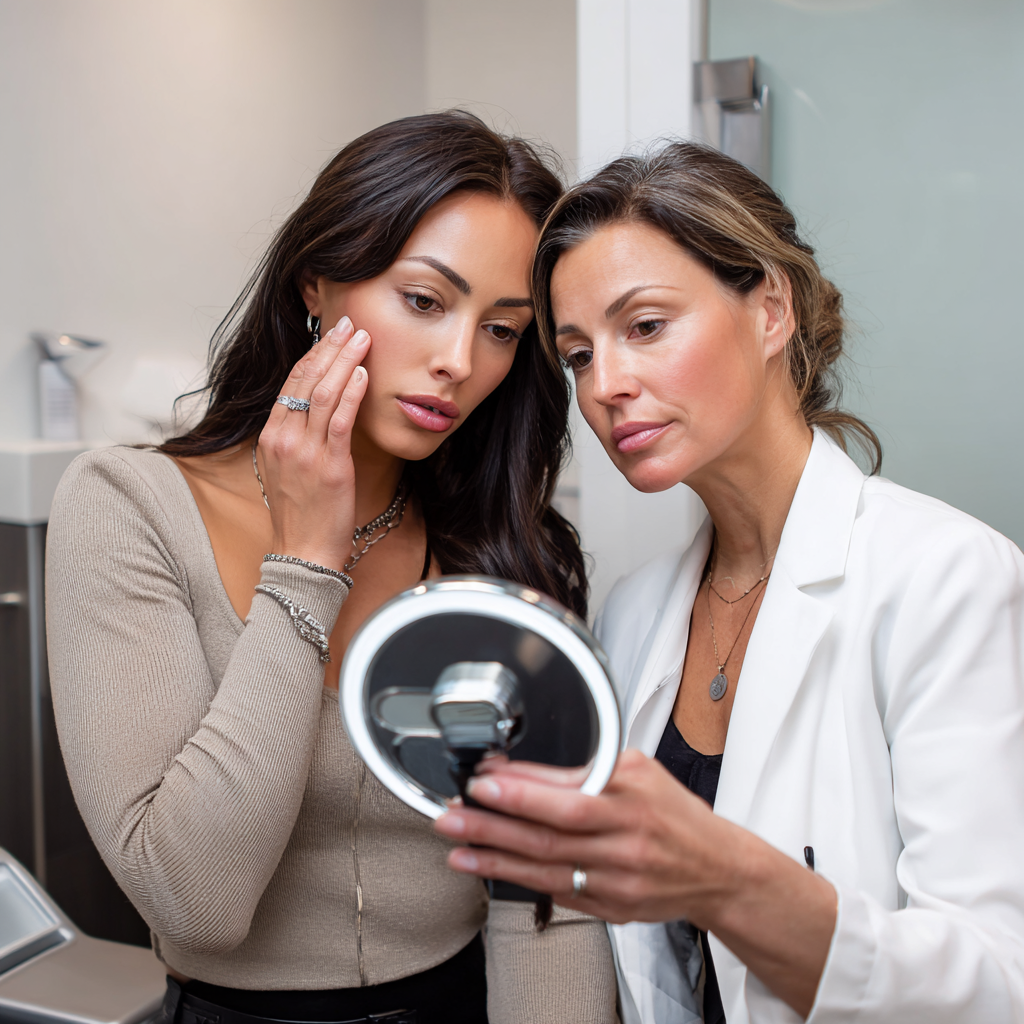
Preventing PIE in the First Place
While not all PIE can be prevented, there are ways to reduce the likelihood. Avoid picking or squeezing pimples. Every squeeze creates additional trauma and inflammation, which increases the chance of blood vessel dilation. Stick to treatments that manage acne without causing unnecessary irritation. If a product burns, stings, or leaves skin raw, it may be too strong.
Managing acne early is another key step. The less severe the breakout, the less intense the inflammation, and the less likely lingering redness will appear. This might mean starting acne treatments sooner rather than later or consulting a dermatologist before things become severe.
Living with PIE
It’s important to acknowledge that treating PIE is a marathon, not a sprint. Even the most effective treatments take time. Camouflage makeup, such as green-tinted primers that neutralize redness, can be a helpful tool in the meantime. These don’t address the underlying issue, but they can make daily life more comfortable while the skin heals.
Some people also find that lifestyle adjustments help. Managing stress, getting consistent sleep, and eating a balanced diet all play roles in how the body handles inflammation. While diet won’t directly erase PIE, a healthier system is generally better at repairing itself.
FAQs
Is post-inflammatory erythema permanent?
No, PIE is not permanent. Unlike scarring, which alters the structure of the skin, PIE is vascular and fades naturally over time. Some cases may take longer to resolve, but with patience and supportive care, the redness usually diminishes.
How do I know if I have PIE or hyperpigmentation?
PIE appears red, pink, or purplish, while hyperpigmentation looks brown, gray, or black. If the mark changes intensity with temperature, exercise, or sun exposure, it’s more likely PIE, since blood flow influences its appearance.
Will retinol help PIE?
Retinol and other retinoids may help PIE by accelerating turnover and encouraging vascular remodeling, but they are not direct redness treatments. They can be part of a broader plan, but they work best when combined with barrier support and sun protection.
Can PIE be treated at home?
Yes, mild PIE often improves with consistent at-home care: sunscreen, gentle cleansers, soothing moisturizers, and anti-inflammatory topicals like niacinamide or azelaic acid. More stubborn cases may need professional treatments.
Is PIE more common in fair skin?
Yes, PIE tends to be more visible in lighter skin tones because the redness contrasts more sharply. In deeper skin tones, post-inflammatory hyperpigmentation is more common, though PIE can still occur.
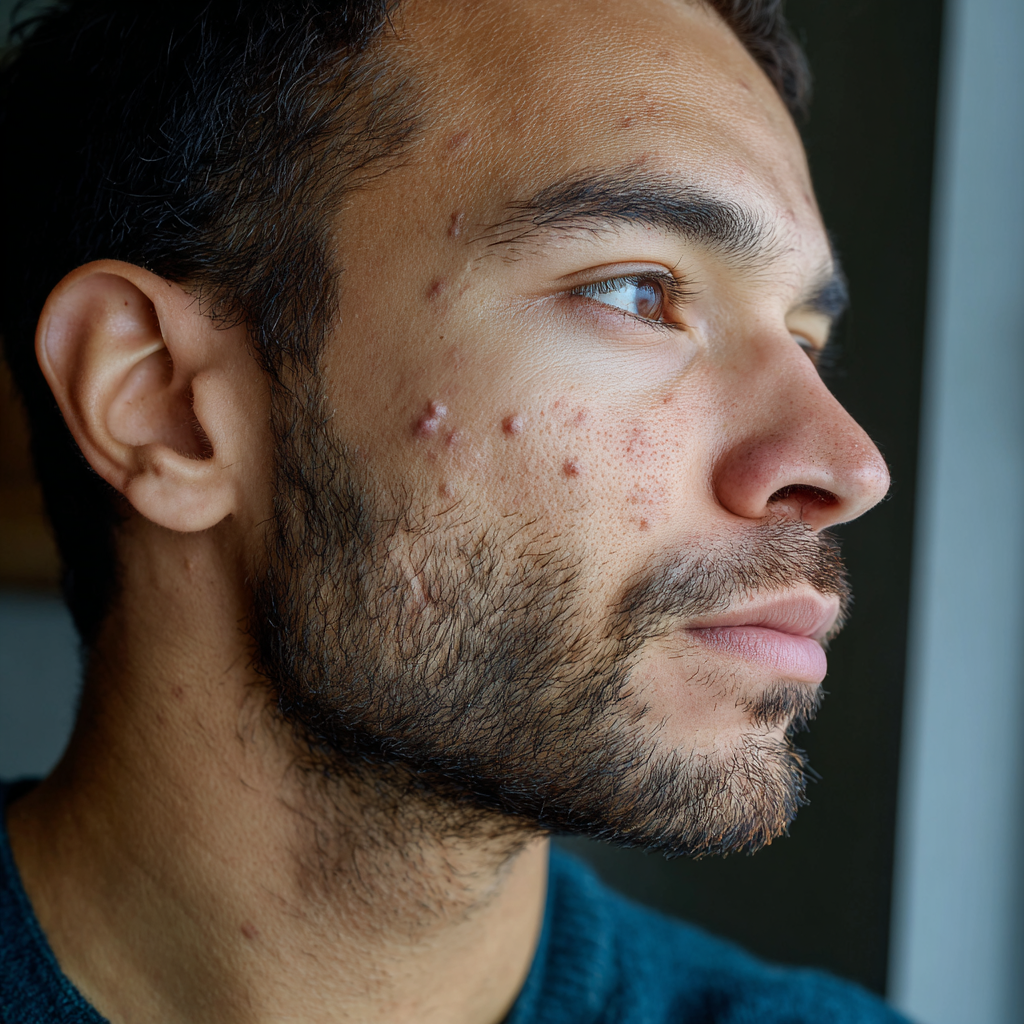
Post-inflammatory erythema can feel discouraging because it lingers after the acne battle seems won. But it’s not a permanent condition. With patience, supportive care, and sometimes professional treatment, those lingering red marks gradually fade. The key is recognizing what PIE is – and what it isn’t – so you can treat it effectively without making it worse. Clear skin is not just about preventing new breakouts but also about letting old wounds fully heal, both on the surface and beneath.


